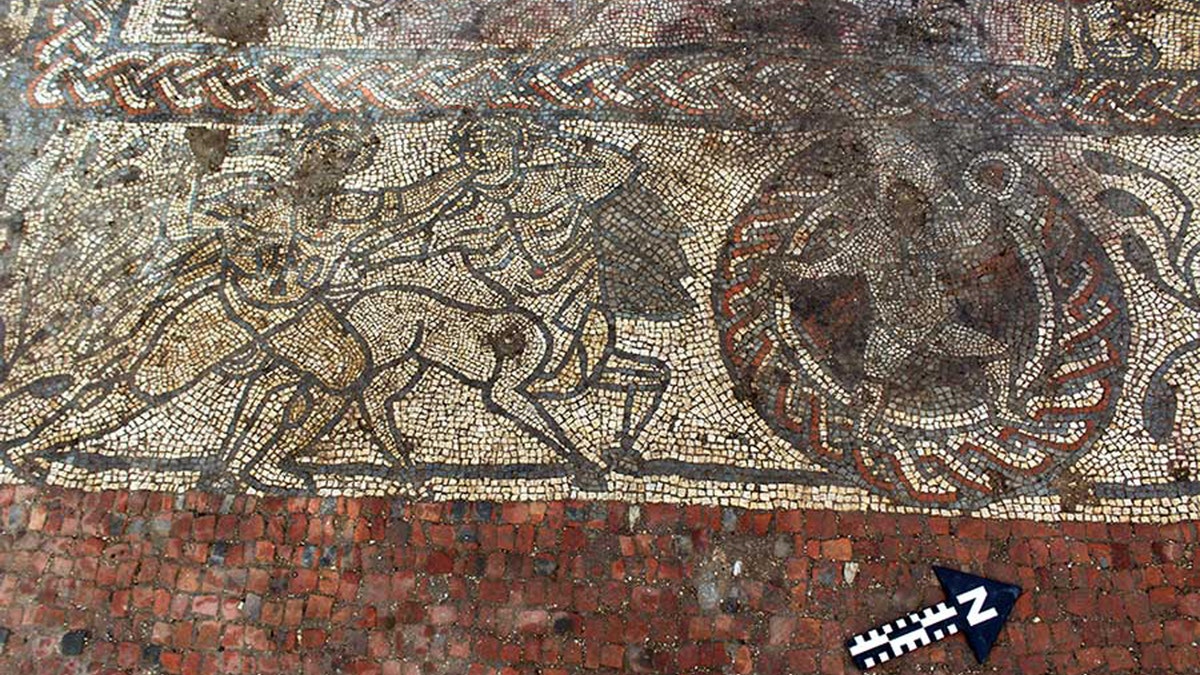
(Credit: Cotsworld Archaeology)
Archaeologists in Great Britain have uncovered an intricate, 20-foot-long mosaic in the ruins of a Roman villa that are thought to depict the Roman gods Hercules and Cupid and the mythological hero Bellerophon.
The discovery caps a three-year exploration of three Roman sites near the West Berkshire village of Boxford, 64 miles west of London.
Excavators from the Boxford History Project, the Berkshire Archaeology Research Group and Cotsworld Archaeology, which collaborated on the project, uncovered a large villa and a bath house at the site in 2015 and a farmstead in 2016. But the recent discovery of numerous artifacts, capped by the unearthing of the mosaic, was unexpectedly thrilling.
NEW VESUVIUS BODIES DISCOVERED: VICTIMS INCLUDE PREGNANT WOMEN AND FETUSES
“This is without question the most exciting mosaic discovery made in Britain in the last 50 years and must take a premier place amongst those Romano-British works of art that have come down to modern Britons,” said mosaic expert Anthony Beeson, who visited the site. According to a report in Cotsworld Archaeology, the mosaic comprised a highly decorated central panel surrounded by a plain border. Its images are believed to include Bellerophon, who, according to Greek mythology, was sent to kill the chimera, a fire-breathing monster with the head of a lion, the body of a goat and the tail of a serpent.
Other images are thought to include Hercules fighting a centaur and Cupid holding a wreath.
“The mosaic is a truly important find,” said Neil Holbrook of Cotsworld Archaeology. “Not only is it a fantastic new piece of Roman art from Britain, but it also tells us about the lifestyle and social pretensions of the owner of the villa at Boxford.
“That person wanted to project an image of themselves as a cultivated person of taste – someone familiar with classical mythology and high Roman culture, despite the fact that their villa was of relatively modest size in a remote part of the Roman empire.
“While this person was most probably of British origin, they wanted to be regarded by their friends, neighbors and subservients as a proper Roman,” Holbrook added.
RARE ROMAN COIN DISCOVERED ON REMOTE SCOTTISH ISLAND
The villa, though modest in size, appears to have been meticulously maintained and upgraded over the years. Among its additions was a bath suite with a small cold-water plunge pool.
Other finds at the site this year were a child’s bracelet, coins, Roman pottery and tile (one with an animal paw print) and animal bone.
